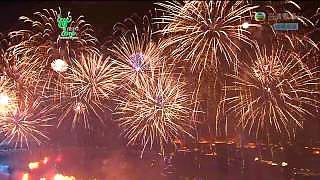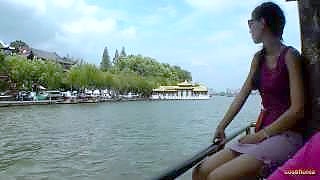
|
With Seiu Travel ...
Harbin City Summer Visitor Guide - A Romantic Resort Destination
Introduction
Harbin, the capital of Heilongjiang Province, is often known for its ice and snow festival, but it is also a charming summer destination. With its mix of Russian architecture, lush parks, and romantic atmosphere, Harbin is perfect for couples seeking a summer getaway. This guide will help you explore the best of Harbin in the warmer months, focusing on its romantic appeal.
Key Attractions
1. Central Street (Zhongyang Dajie)
Central Street is Harbin's most famous pedestrian street, lined with European-style buildings, boutique shops, and cafes. A stroll down this street offers a glimpse into Harbin's rich cultural heritage and a romantic atmosphere with street performers and outdoor dining.
2. Harbin Sun Island Scenic Area
Located on the north bank of the Songhua River, Sun Island is a beautiful park ideal for picnics, leisurely walks, and enjoying nature. In summer, the island is filled with blooming flowers and greenery, making it a perfect spot for couples to relax and enjoy the scenery.
3. St. Sophia Cathedral
This stunning Russian Orthodox church is an architectural marvel and one of Harbin's most iconic landmarks. The cathedral, with its green onion-shaped domes, is a romantic backdrop for photos and offers a glimpse into Harbin's Russian past.
4. Songhua River Cruise
A cruise on the Songhua River is a must-do for couples visiting Harbin. The gentle breeze and scenic views of the city's skyline create a romantic ambiance. Evening cruises are especially popular, offering a chance to see the city lights reflecting on the water.
Romantic Activities
Evening Walks: Take a stroll along the Songhua River or in Zhaolin Park. The soft glow of street lamps and the serene environment provide a perfect setting for romantic evening walks.
Horse Carriage Rides: Central Street offers horse-drawn carriage rides, adding a touch of old-world romance as you ride through the historic parts of the city.
Visit to Siberian Tiger Park: For couples who love wildlife, visiting the nearby Siberian Tiger Park can be an adventurous yet memorable experience.
Café Hopping: Explore the numerous cafes along Central Street. Enjoy a quiet coffee break with pastries and soak in the atmosphere of Harbin's unique blend of Russian and Chinese culture.
Boat Rides on Sun Island: Rent a boat on Sun Island and enjoy a peaceful ride on the lake, surrounded by lush greenery and the sounds of nature.
Romantic Dining Options
Harbin offers a variety of dining experiences, from fine dining to casual eateries, catering to romantic outings. Here are some recommended spots:
Huamei Restaurant: Known for its Russian-style architecture and dishes, Huamei offers an authentic experience. Try the borscht, Russian bread, and hearty meat dishes.
Modern Hotel: A historic hotel with a famous bakery, offering delicious Russian and European pastries. It's a great place for afternoon tea or a sweet treat.
Lucy's Café and Restaurant: Located on Central Street, Lucy's offers a cozy atmosphere with a mix of Chinese and Western cuisine. The outdoor seating is perfect for a summer evening.
1918 Coffee Shop: A quaint café located in a historic building, offering a charming ambiance and a range of coffee and light snacks. Ideal for a relaxed and romantic coffee break.
Practical Tips for Visitors
Best Time to Visit: Summer months (June to August) are ideal for enjoying Harbin's outdoor attractions and pleasant weather.
What to Wear: Summer temperatures in Harbin are mild, but evenings can be cool. Bring light, comfortable clothing for daytime and a light jacket for the evening.
Language: While Chinese is the main language, English is not widely spoken. Having a translation app or a phrasebook can be helpful.
Currency: The local currency is the Chinese Yuan (CNY). It's advisable to carry some cash as not all places accept credit cards.
Transportation: Harbin has a reliable public transport system, including buses and taxis. Central Street and many attractions are walkable.
|
 Movie time – Let’s Get Married ! 咱们结婚吧 !
Movie time – Let’s Get Married ! 咱们结婚吧 !





